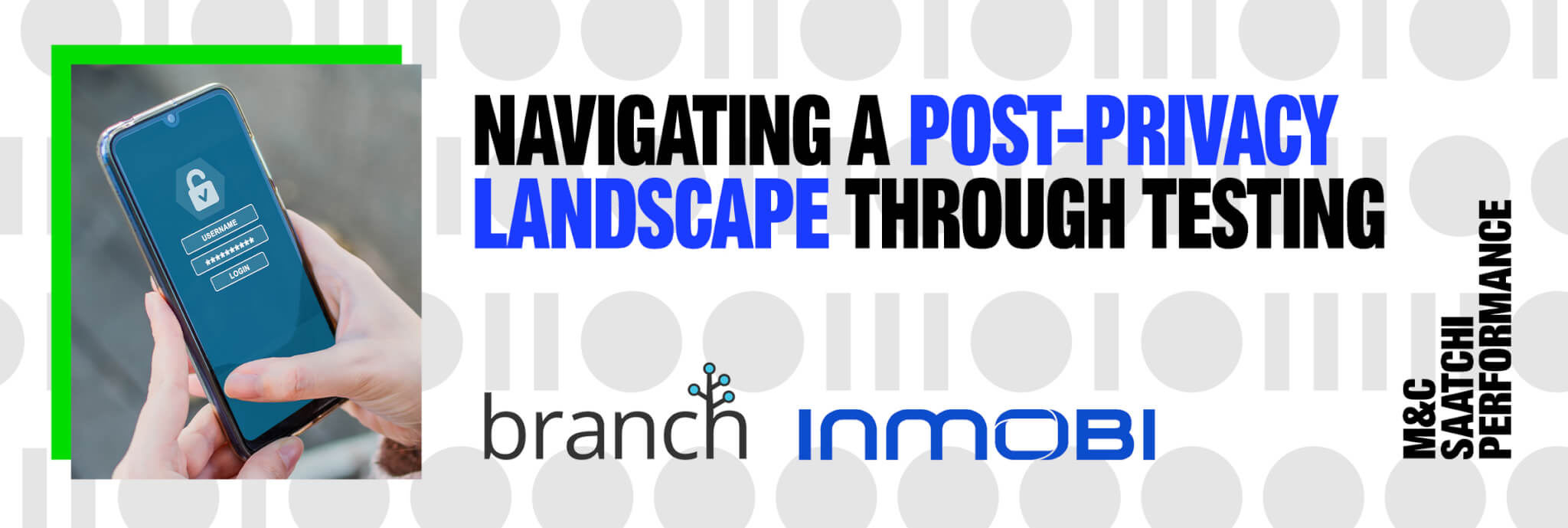How to Test New Ad Channels in the Mobile Privacy Era


Apple shook up the entire mobile ad industry with the announcement of its new app tracking transparency (ATT) framework. These changes upended how marketers gather data and target users, leading many to wonder if the golden age of mobile marketing is over.
You don’t have access to as much data as you had before, so you need to adapt your strategies for the post-privacy era. Being smarter and more intentional in testing ad channels will go a long way to ensure you have the information you need to make informed decisions about where to spend your ad dollars. Plus, introducing new channels will diversify your marketing mix, ensuring a better chance at a successful ad campaign. Read on to discover the best testing strategies to make your data as informative as it used to be, no matter what additional privacy changes Apple or Google throw your way.
Goodbye, third-party data
With the introduction of ATT, Apple has put the power to reject mobile ad tracking within users’ hands. Now, users can opt in or out of personalized advertising on an app-by-app basis or shut it off across their entire device. What was an invisible process is now crystal clear at the operating system level.
These changes have effectively shut out third-party data and attribution for most iOS users. According to Srinivas KC, Senior Vice President & General Manager of Advertiser Platforms at InMobi DSP, around 70% of iOS users are “completely invisible” to advertisers.
Rather than attempting to find unauthorized workarounds for this lack of data, learn to work within the limitations. Apple’s changes aren’t going anywhere, and the company is cracking down on “fingerprinting” user activity with IP addresses and device information. And while Android is free of these changes for now, Google’s Privacy Sandbox is coming within the next few years and will change how marketers interact with Android devices.
“The main tip for mobile marketers here is to embrace mobile privacy,” Srinivas said. “Embrace SKAdNetwork, embrace Privacy Sandbox, and build your marketing stacks toward them.”
“The main tip for mobile marketers here is to embrace mobile privacy. Embrace SKAdNetwork, embrace Privacy Sandbox, and build your marketing stacks toward them.”
Srinivas KC, Senior Vice President & General Manager of Advertiser Platforms at InMobi DSP
Getting a more precise picture with the data you have
While ATT has undoubtedly shaken up mobile advertising by removing critical access to third-party data, it’s important to remember that your access to first-party data hasn’t changed. Knowing how to get the most out of that data will be vital in the post-privacy marketing landscape.
So how can marketers embrace these privacy changes while optimizing the data they do have? The answer: lots and lots of testing.
Right now, marketers are focusing much of their attention on testing within Android, as that platform hasn’t yet seen the same sweeping privacy changes.
“I think Android is a big winner right now, and advertising budgets on the platform have expanded this past year,” said Adrienne Rice, Director of Media Investment at M+C Saatchi Performance. “We’ve seen CPMs increase on Android because there’s far more competition.”
Before diving head-first into Android testing, remember that you can’t directly compare the demographics split between Android and iOS users. Android makes up nearly 70% of the mobile device market, but iOS drives more sales and conversions.
“Just because something works on Android doesn’t necessarily mean it’ll definitely work on iOS,” said Dane Buchanan, Director of Data, Analytics & Tech at M+C Saatchi Performance. “But it will give you enough ammunition to start testing on iOS.” Use Android testing to engage with different channels to figure out the dynamics at play, then funnel those learnings back into iOS.
Don’t write off iOS entirely, though. 20%-30% of its users still regularly opt-in to ad tracking, forming a sizable sample pool for testing before expanding your campaign to a broader audience. And you’ll still have access to first-party data, which you can connect to lookalike audiences for comparison.
Working with data scientists and analysts like M+C Saatchi Performance will be vital for getting the most context from available data going forward. That way, you’ll be able to understand the holistic picture of your advertising campaign and audience, even without third-party data.

Dane Buchanan, Global Director of Data, Analytics & Tech
Test everything and test it again
Navigating a post-privacy landscape only highlights the necessity for making testing an important phase of any campaign.
“Don’t be afraid to test everything and anything,” Dane said. “Test every single day and through any framework, whether that’s A/B testing, randomized or controlled testing, in-app testing, or geotesting. There are a lot of different methods for testing inputs.”
Simply running individual tests won’t give you the data you need, though. It’s important to come up with a goal, a plan to achieve that goal, test with intention, then adjust your approach based on your results and test again. Leverage individual channels like Facebook, Snapchat, YouTube, or TikTok to test your ad creative on a granular level. Geotesting different markets will also provide insight into how to best allocate spend.
Incrementality testing is the key to getting the best ROAS out of your data, especially on iOS. This approach involves a series of A/B tests that compare aspects of your ad campaign to determine which elements are the most effective.
Ideally, your tests will compare small changes between two ads. For example, you may want to determine whether a male or female voiceover leads to more downloads. You can test color schemes, QR code implementation, different CTAs, and even the use of a single word. Once you have your testing parameters in place, run the test for a few weeks, get your results, then make another change to hone further in on the most successful aspects of your campaign.
Alternatively, testing via influencers (especially via TikTok) is also a great way to get organic data on creative effectiveness. Send your app or product to the influencers and set a few parameters for how they should cover it, let them create custom videos for their channels, then gather data on how users engage with their content. Once you’ve identified which ads perform the best, activate your paid campaign to the broader channel audience to maximize results.
Even with the mobile privacy limitations Apple has set, SKAdNetwork can still offer a wealth of information. In order to achieve success, though, be prepared to invest heavily into testing so you can get meaningful information back. “In order to get good insight out of your SKAdNetwork data, you need to have significant test budgets,” Adrienne explained. “You need to meet certain privacy thresholds that Apple has set, so you need to commit quite a bit of your budget to testing to get those conversion values back with your data.”
Take an omnichannel approach when testing new ad channels
If you’re limiting a campaign to one channel, you’re essentially leaving money on the table.
“The more channels you have in a media mix, the higher your ROI will be,” Dane said. “Adding in a second channel can typically increase your ROI by 20-25% because you’re increasing your reach across those channels.”
There are limits to omnichannel strategies, and eventually you will hit diminishing returns — but that’s what testing is for. By dipping your toes into each channel, you’ll know where your campaign will perform the best, informing you where to spend your ad dollars.
When considering which channels to test, include TikTok and streaming TV at the top of your list. These channels have been around for a few years, but they’re currently seeing explosive growth and massive success thanks to shifting demographics and increased adoption rates. TikTok, in particular, has weathered many of these privacy changes well due to the size of its install base and how it measures usage.
Streaming TV is also becoming an important addition for marketers, combining the high-quality creative you see on linear TV with the same performance marketing tools found on mobile platforms. Its privacy restrictions also differ from iOS or Android, making it a great way to fill in the gaps from these other platforms.
“TikTok and streaming TV were the big winners over the last year in terms of new channels,” Dane said. “TikTok was faced with many of the same problems as other digital platforms but gained quite a lot because of the opaqueness of measurement. And streaming TV can be tracked, making it a better alternative to linear TV options.”
“The more channels you have in a media mix, the higher your ROI will be. Adding in a second channel can typically increase your ROI by 20-25% because you’re increasing your reach across those channels.”
Dane Buchanan,
Global Director of Data, Analytics & Tech M+C Saatchi Performance
Get real, human insight from your data
Maximizing your data in a post-privacy landscape isn’t impossible — it just requires fresh ideas and a new approach. We’ve also written a guide to help you navigate these mobile privacy policies and get the most out of your ad campaign. Download our free ebook Advertising in the Privacy Era: A Guide for Mobile Marketers, and discover how to test, assess your data, and boost ROAS across Apple and Android devices.

